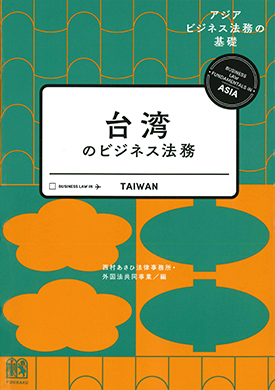-
Articles
FSR Update: Draft Guidelines on the Implementation of the Foreign Subsidies Regulation
On July 18th, 2025 the Commission published Draft Guidelines on the implementation of the Foreign Subsidies Regulation (FSR). As the Commission is required to publish and regularly update such Guidelines (see Article 46(1) FSR) in order to foster predictability of the FSR, the Guidelines aim to help undertakings to navigate the intricacies of the FSR as they provide clarification on (I.) the assessment of the distortive effects of foreign subsidies, (II.) the balancing test and (III.) the call-in power of the Commission.
We highlight below the key points of the Guidelines which the Commission addresses for the first time, or which were not yet covered in such depth in the previously published Staff Working Document of 26 July 2024. Building on the Commission’s practice the Guidelines provide long awaited further guidance on the following topics.
I. Assessment of the distortive effects of foreign subsidies
As the Commission can prohibit a concentration or the award of a contract in a public procurement procedure when it comes to the conclusion that foreign subsidies received by the buyer / bidder have a distortive effect on competition within the internal market (and commitments are not sufficient to fully remedy the distortion), the assessment of the distortive effects of foreign subsidies is vital.
This assessment becomes particularly relevant in complex transactions and procurement procedures, especially where companies notify critical subsidies. In such cases, a detailed substantive review is required, and clear guidance on how to conduct this assessment is essential. While the FSR itself provides only a broad framework, the draft Guidelines offer clarification on key aspects of the Commission’s assessment.
Article 4(1) FSR sets out two cumulative conditions to determine whether a foreign subsidy distorts the internal market: The Commission assesses namely (1.) the liability of the foreign subsidy to improve the competitive position of an undertaking in the internal market and (2.) if by improving the competitive position of an undertaking in the internal market, the foreign subsidy actually or potentially negatively affects competition in the internal market. (3.) Under the public procurement tool the Commission assesses whether a tender is unduly advantageous.
1. Liability of a foreign subsidy to improve the competitive position of the undertaking in the internal market
The Guidelines clarify that foreign subsidies are liable to improve the competitive position of an undertaking in the internal market where they are used in the internal market or are intended or directed to the internal market (i.e., the foreign subsidy is granted to support economic activities within the internal market or is conditional on events related to an economic activity within the internal market).
Other foreign subsidies that are neither directly used in the internal market, intended or directed at it can still be liable to improve the competitive position of an undertaking in the internal market, if they are regarded as cross-subsidisation. This would be the case when a foreign subsidy is granted to an undertaking outside the internal market but frees up resources that are then used for economic activities in the internal market. Cross-subsidisation also occurs if the foreign subsidy is transferred to economic activities in the internal market, or if the subsidised undertaking allows the entity operating in the internal market to operate at a loss or with very low margins.
The factors the Commission uses to assess whether a foreign subsidy is likely to be cross-subsidisation are clarified by the Guidelines and include:
・The design and conditions of the foreign subsidy, as they may prevent cross-subsidisation;
・The differences in shareholding structure e.g., if the receiving entity is under joint control by shareholders, this may prevent the entity from transferring the subsidy to another entity in which the jointly controlling shareholders have no shares in;
・Agreements with third parties, as depending on their content and enforceability they may make cross-subsidisation less likely;
・Applicable laws, binding rules and regulatory provisions;
・The economic situation of the company, since cross-subsidisation from entities in a distressed economic situation may be considered less likely.
2. Actual or potential negative affect on competition in the internal market
The Guidelines give criteria when there is an actual or potential negative affect on competition in the internal market:
・In the acquisition of other companies;
・Through the impact of the foreign subsidy on operating decisions of the company under investigation;
・Through the alteration of investment decisions of the company under investigation or
・On activities at other levels of the value chain.
3. Unduly advantageous tenders in public procurement procedures
Foreign subsidies also distort the internal market when they lead to unduly advantageous tenders in public procurement procedures. When assessing whether a foreign subsidy may have an impact on a tender, the abovementioned factors are used by the Commission in analogy.
1. Advantageous tender
The Commission first assesses whether the tender submitted is advantageous in relation to the works, supplies or services concerned. According to the Guidelines such an advantage may be reflected by reducing the price, increasing the quality or by offering better terms related to e.g. delivery and lead times, warranties and after-sales support, payment terms, service level agreements, contractual flexibility, compliance with technical specifications, risk management, innovation, social and sustainability values.
To assess the advantage of the tender the Commission compares the tender to other tenders to conclude what the tender would look like without the foreign subsidies, and further compares the terms of the tender with the estimates of the contracting authority.
2. Undue advantage
The tender is unduly advantageous if the advantage stems from a foreign subsidy. However, if the bidder can justify the advantage by other factors, such advantage may be due. The Guidelines confirm these factors to be:
・Cost effectiveness of the relevant production process;
・Innovations or novel technical solutions;
・Exceptionally favourable conditions from which the bidder benefits in the supply of goods and services.
However, this list is not exhaustive and the Commission may use other relevant criteria to assess whether the advantage is justified. Similarly also the bidder may demonstrate (additional) other factors to show that the advantageous nature of the tender is not due to a foreign subsidy.
II. Balancing Test
Once the Commission comes to the conclusion that there are negative effects stemming from a foreign subsidy in the form of distortion in the internal market it may (on the basis of information received) balance the negative effects against positive effects of the foreign subsidy (Art. 6 FSR) in order to decide whether to impose redressive measures or accept commitments.
1. Scope of positive effects
The Guidelines provide helpful clarification on the types of positive effects that may be taken into account, such as contributions to the competitiveness and resilience of the EU economy. They also reiterate that the Commission may rely on positive effects recognised under EU State aid rules.
In addition, the Guidelines clarify that when the positive effects are related to non-EU policy objectives, the Commission may assess whether and how they have an impact on the EU. The Commission takes a rather broad approach, considering as potentially relevant even foreign subsidies that contribute to global welfare or promote global public goods, e.g., by supporting high environmental standards (such as climate change mitigation efforts in a third country or biodiversity protection), safeguarding human rights, or fostering research and development activities that lead to innovative products or technologies becoming available within the EU.
This is a welcomed approach as the recognition of broader positive effects adds a layer of flexibility. However, it remains to be seen in practice how the Commission assesses whether and how positive effects related to non-EU policy objectives have an impact on the EU and how strict the respective assessment standard of the Commission will be.
2. Burden of proof
While the FSR makes it clear that it is up to the parties to submit information on any positive effects of the foreign subsidy, the Guidelines provide further guidance on the level and quality of substantiation required. In order to substantiate such positive effects information should be provided on:
- The nature, likelihood and significance of the positive effects, as well as when such positive effects would likely occur;
- Why the positive effects are specific to the foreign subsidy;
- An analysis enabling the Commission to determine whether the distortive effects resulting from the foreign subsidies go beyond that which is necessary to generate the positive effects relied on; and
- Why the positive effects mitigate or outweigh the distortion established by the Commission.
III. Call-in power
The Commission’s approach to call-ins below the thresholds for obligatory notifications has been clarified by the Guidelines providing the following elements, which the Commission considers when assessing whether a case merits an ex-ante review:
- The strategic or important character of the current or future economic activity concerned of the underlying or related sector, of the relevant supply or value chain;
- Patterns in investments, acquisitions or participation in public procurement procedures throughout which the undertakings concerned build up influence or economic presence in the respective sectors;
- Contextual information relating to the characteristics of the foreign subsidies, especially the existence of foreign subsidies that are most likely distortive;
- Specifically for public procurement procedures: The strategic importance of the object of the procurement procedure and its significance;
- Specifically for concentrations: The contextual information that indicates that the level of the relevant economic activity of the target does not reflect its actual or future economic significance;
IV. Next Steps
The Commission has now invited interested parties to comment on this first draft of the Guidelines until 12 September 2025, with a final draft planned for January 2026. In addition, the Commission is working on an FSR report that will be published by July 2026 and reviews the implementation and enforcement of the Regulation.












Kojiro Fujii specializes in the fields of competition law and international trade law. He also covers emerging areas of digital policy/regulations and public policy/regulations, such as those related to sustainability. His expertise in these areas is frequently recognized by international and domestic legal publications. Kojiro also is regularly ranked by Chambers (Band 1 International Trade, Japan and Band 2 TMT, Japan) and Who’s Who Legal (Competition). He achieved the highest ranking in the “International Trade and Economic Security” category of Nikkei’s “Most successful lawyers” (as voted by Japanese companies and peer lawyers) in 2022; he was recognized by Asian Legal Business as one of the Top 15 Technology, Media and Telecommunications Lawyers in Asia in 2023; and he was shortlisted for the FT Innovative Lawyers Awards Asia-Pacific as the Most Innovative Practitioner for his work covering those areas in 2024.
In addition to his career at N&A, he served as the deputy director of the Ministry of Economy, Trade and Industry of Japan, where he handled several important WTO disputes on behalf of the Japanese government. He also worked at a highly reputable international law firm in Washington DC, where he focused on antitrust matters.